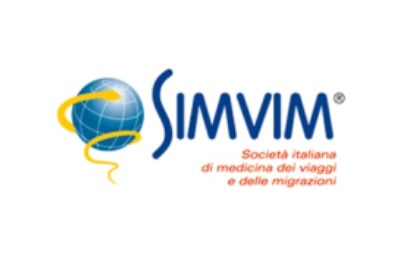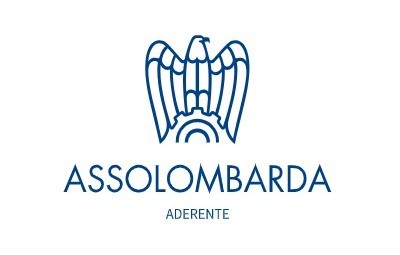SHINGLES
Human Herpesvirus 3 (HHV 3) or Varicella-Zoster Virus is a DNA virus that belongs to the Herpesviridae family and is an alpha-herpesvirus. It is an endemic virus in our national area that mainly causes infection during childhood, causing the onset of chicken pox. Chickenpox, once contracted causes lifelong immunity. However, the virus is not eliminated from the body and remains latent in the spinal ganglia; if the latent virus undergoes reactivation it will cause the onset of Zoster or shingles.
TRANSMISSION
The transmission of the virus is directfrom person to person, it takes place in the air via droplets that are released with coughs and sneezes. It is a highly transmissible pathology, which occurs mainly in childhood and is facilitated by the proximity determined by school environments. The contagiousness of the subject affected by chickenpox begins one or two days before the appearance of the rash and remains up to the entire duration of the pathology, with a peak in the acute exanthematous phase of the disease. Another way of transmission can be the transplacental one, therefore vertical from mother to fetus, causing more serious consequences than what happens in the post-natal period.
EPIDEMIOLOGY
Chickenpox is an endemic disease worldwide and infection, in the absence of vaccination, tends to occur during childhood. The epidemiology of this infection differs between temperate and tropical areas, probably both due to the characteristics of the virus such as sensitivity to heat, and to the characteristics of the area such as population density and hygiene conditions. In Italy the estimated incidence is 99 cases per 100,000 inhabitants per year. The incidence of this pathology has certainly decreased after the introduction of the vaccine, which is administered together with the rubella, measles and pertussis vaccine in childhood.
Chicken pox
Chickenpox is an exanthematous disease that mainly affects in childhood, but which can also be contracted in adulthood, causing more serious clinical consequences. After infection, the virus needs to be incubated for two to three weeks before producing clinical signs. After the incubation period, the onset is with a skin rash characterized by papules that transform into vesicles and subsequently into pustules, up to the final stage of crusts which, if left to fall on their own and not removed manually, ultimately leave no scars. It is an extremely itchy rash typically consisting of 250-500 lesions that cover the whole body and is defined as a starry sky, a definition which indicates the fact that the rash can present different evolutionary states at the same time in different areas. It typically undergoes spontaneous healing within 7-10 days. However, the clinic is more severe in immunocompromised subjects, in newborns and in adults. Complications of chickenpox can be bacterial superinfection of skin lesions, hepatitis, thrombocytopenia, arthritis, encephalitis, pneumonia and glomerulonephritis. However, if the infection is contracted by the pregnant woman, it can be transmitted to the fetus, causing embryopathy if contracted in the first 6 months of gestation, with a clinical picture of neonatal varicella.
ZOSTER OR ST ANTONIO FIRE
Varicella infection usually results in lifelong immunity in immunocompetent individuals, but the virus is not cleared from the body and remains latent in the spinal root ganglia. The latent virus can undergo reactivation in about 10-20% of cases, an event that usually occurs in subjects aged around 50 years. The reactivation of the virus determines the onset of Zoster or shingles, which manifests itself with a skin rash at the level of the dermatomes corresponding to the ganglion of latency, usually unilaterally. Skin lesions at the level of the affected dermatomes are referred to as vesicular-type cluster lesions. The symptomatology of this pathology is pain at the level of the eruption, often very intense accompanied by burning and itching. This condition can also determine the onset of systemic symptoms such as fever, headache and sense of fatigue. If the pain associated with this condition persists for more than a month, it is called "post-herpetic neuralgia".
DIAGNOSIS
The diagnosis, both for chickenpox and for Zoster, is usually clinical, possible thanks to the extremely characteristic picture of signs and symptoms. Laboratory diagnostic tests are also available, such as the search for IgM against Varicella-Zoster.
THERAPY
As far as chickenpox is concerned, therapy is usually only symptomatic. For flu-like symptoms and fever, the recommended treatment is paracetamol, while the use of salicylates, such as aspirin, should be avoided due to the increased risk of the onset of Reye's syndrome in children. In case of intense itching, antihistamines can be administered instead. In any case, practical precautions must be taken, such as avoiding scratching to avoid the permanence of scarring on the skin, and isolating the patient to avoid the spread of the disease. In subjects most at risk of complications it is possible to use antiviral drugs such as Acyclovir; in immunosuppressed subjects this therapy must be carried out intravenously.
As far as Zoster is concerned, treatment must begin within 72 hours of the onset of the first symptoms in immunocompromised subjects and it is also strongly recommended in immunocompetent subjects who present with intense pain or facial rash, especially around the eye. The treatment is based on antiviral drugs such as Famciclovir or Valaciclovir through oral administration, which have been shown to have greater bioavailability than Acyclovir. In immunocompromised patients, however, there is an indication for the administration of therapy by the intravenous route. The therapeutic management of painful symptoms, pain-relieving and anti-inflammatory drugs can be administered. The clinical management of the symptoms linked to post-herpetic neuralgia is instead more complex and may require drugs such as Gabapentin and Pregabalin, tricyclic antidepressants, solutions for local application based on local anesthetics such as lidocaine, injections of botulinum toxin. In cases of refractory pain, it may be necessary to switch to opioid pain relievers or to the use of intrathecal methylprednisolone.
PREVENTION
The prevention of this pathology is based on the administration of the Varicella-Zoster vaccine, available since 1995 and administered together with the measles, rubella and pertussis vaccine. This vaccine has been shown to be 95% effective in preventing moderate and severe forms and 70-75% in mild forms. It is a safe and well tolerated vaccine. Administration takes place in two doses, one around 12-15 months of age and the second around 5-6 years of age. This vaccination is contraindicated in case of proven allergy to vaccine components and in case of pregnancy; in fact, women who have been vaccinated should wait at least a month before becoming pregnant. On the other hand, vaccination is also recommended to older children or adults who have not yet developed the disease, as the infection contracted in adulthood could lead to more serious clinical consequences. For subjects at high risk of contracting severe varicella, such as frail newborns or immunocompromised subjects, treatment with intramuscular immunoglobulins is indicated if they have been exposed to infected people, according to passive prophylaxis; this administration should take place as soon as possible and no later than 96 hours after exposure.
Sources:
World Health Organization (WHO)





